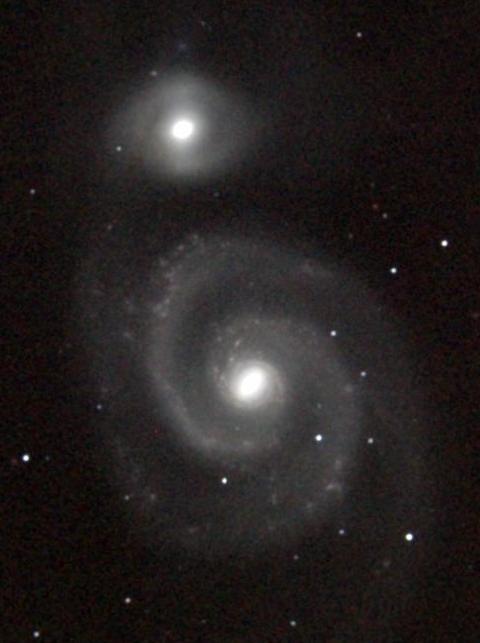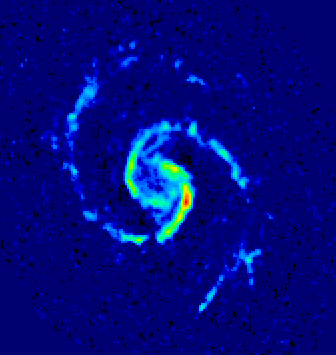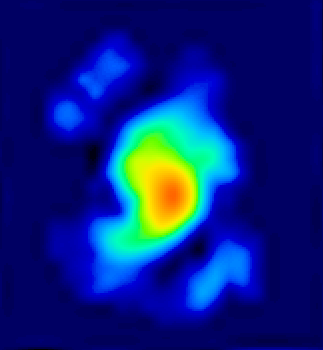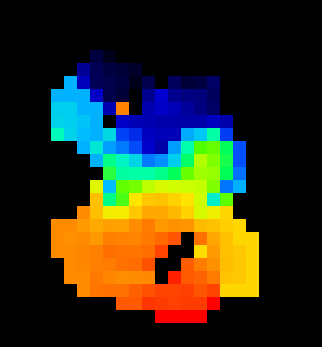
|
M51 (NGC 5194), also known as the Whirlpool Galaxy, is located 10 Mpc
away, and thus 1" corresponds to about 50 pc in physical scales.
The optical disk of the galaxy is inclinded by about 20 degrees from
the line of sight, allowing us to have this nearly face-on view.
The diameter of the optical disk is about 6' (about 20 kpc).
The total molecular gas content of M51 is about 10^10 solar masses.
In comparison, its FIR luminosity is about 2 x 10^10 solar luminosity.
Therefore it is a somewhat gas-rich spiral with a moderate level of
massive star forming activity -- but not exceptional.
|



